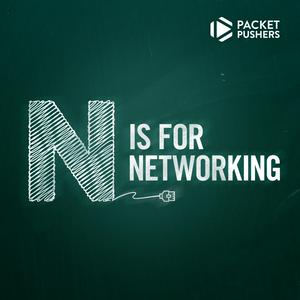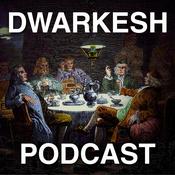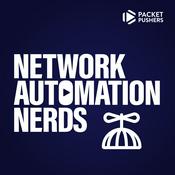47 afleveringen

N4N045: Audience Follow Up & 2026 Preview
18-12-2025 | 59 Min.
If you’re curious as to what Ethan and Holly have in store for 2026, they give you a sneak peak on today’s episode. Hint: Some of these topics might include letters like B, G, P, Q, o, S, A and I. They also take time in this episode to answer listener questions, ranging from how... Read more »

N4N044: Redundancy Vs. High Availability Part 2 – HA Networking Isn’t Free
04-12-2025 | 56 Min.
In Part 1 of Redundancy vs. High Availability, we said that sometimes high availability and redundancy are considered to be the same thing, but we disagree. Holly and Ethan do agree that high availability can be considered a network design goal, and that redundancy is just one technique that can be used to help make... Read more »

N4N043: Redundancy vs. High Availability Part 1
20-11-2025 | 1 u.
In today’s chat, Holly and Ethan consider a question from listener Douglas who asks, “How do you approach designing a network for high availability and redundancy?” They start by defining differences between redundancy and high availability, and talk about Holly’s experience with her own customers. Then they share examples of how to achieve redundancy in... Read more »

N4N042: Meet MACsec
06-11-2025 | 52 Min.
MACsec is a protocol for encrypting Ethernet frames on a local (though not always local) network. Ethan Banks and Holly Metlitzky have an ELI5 (explain like I’m 5) discussion as to what exactly is MACsec and how it differs from IPsec. They talk about when and whether you need to implement MACsec with all the... Read more »

N4N041: Switched Virtual Interface (SVI) and Integrated Routing and Bridging (IRB)
23-10-2025 | 49 Min.
If you’ve ever wondered what the difference is between a Switched Virtual Interface (SVI) and Integrated Routing and Bridging (IRB), today’s show is for you! Ethan Banks and Holly Metlitzky start with some history and the basics of communication between layer 2 and layer 3 and then explain how the concepts of SVI and IRB... Read more »
Meer Technologie podcasts
Trending Technologie -podcasts
Over N Is For Networking
Luister naar N Is For Networking, Acquired en vele andere podcasts van over de hele wereld met de radio.net-app

Ontvang de gratis radio.net app
- Zenders en podcasts om te bookmarken
- Streamen via Wi-Fi of Bluetooth
- Ondersteunt Carplay & Android Auto
- Veel andere app-functies
Ontvang de gratis radio.net app
- Zenders en podcasts om te bookmarken
- Streamen via Wi-Fi of Bluetooth
- Ondersteunt Carplay & Android Auto
- Veel andere app-functies


N Is For Networking
download de app,
luisteren.






































